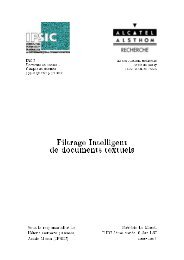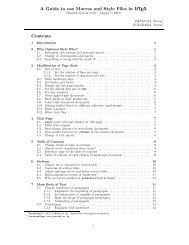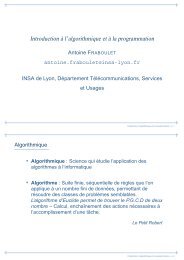- Page 1 and 2: MSP430 IAR C/C++ CompilerReference
- Page 3 and 4: Brief contentsTables ..............
- Page 5: ContentsTables ....................
- Page 8 and 9: Standard streams for input and outp
- Page 10 and 11: Functions .........................
- Page 12 and 13: -e ................................
- Page 14 and 15: C language extensions .............
- Page 16 and 17: __enable_interrupt ................
- Page 18 and 19: Implementation-defined behavior ...
- Page 20 and 21: 32: Data pointers .................
- Page 24 and 25: Document conventionsFURTHER READING
- Page 26 and 27: Document conventionsxxviMSP430 IAR
- Page 29 and 30: Getting startedThis chapter gives t
- Page 31 and 32: Getting startedLINKINGThe IAR XLINK
- Page 33 and 34: Getting startedPOSITION-INDEPENDENT
- Page 35 and 36: Getting startedThe way you set up a
- Page 37 and 38: Getting startedSPECIAL FUNCTION TYP
- Page 39 and 40: Data storageThis chapter gives a br
- Page 41 and 42: Data storageThe following table sum
- Page 43 and 44: Data storageThe following table sum
- Page 45 and 46: Data storageIn the example below, t
- Page 47 and 48: Data storageAuto variables can only
- Page 49 and 50: FunctionsThis chapter contains info
- Page 51 and 52: FunctionsThis creates an interrupt
- Page 53 and 54: Functions__monitor int get_lock(voi
- Page 55 and 56: Functionsapplied to an object. When
- Page 57 and 58: Placing code and dataThis chapter d
- Page 59 and 60: Placing code and dataCUSTOMIZING TH
- Page 61 and 62: Placing code and dataNote: Copy ini
- Page 63 and 64: Placing code and dataInitialized da
- Page 65 and 66: Placing code and datasize is too sm
- Page 67 and 68: Placing code and dataIf you create
- Page 69 and 70: Placing code and dataSome instructi
- Page 71 and 72: The DLIB runtimeenvironmentThis cha
- Page 73 and 74:
The DLIB runtime environmentSITUATI
- Page 75 and 76:
The DLIB runtime environmentFor the
- Page 77 and 78:
The DLIB runtime environmentItems t
- Page 79 and 80:
The DLIB runtime environmentThe fol
- Page 81 and 82:
The DLIB runtime environmentThis wi
- Page 83 and 84:
The DLIB runtime environmentFor the
- Page 85 and 86:
The DLIB runtime environmentAn appl
- Page 87 and 88:
The DLIB runtime environmentExample
- Page 89 and 90:
The DLIB runtime environmentScanf c
- Page 91 and 92:
The DLIB runtime environmentIf your
- Page 93 and 94:
The DLIB runtime environment430\src
- Page 95 and 96:
The DLIB runtime environmentTo make
- Page 97 and 98:
The DLIB runtime environmentTo use
- Page 99 and 100:
The DLIB runtime environmentRuntime
- Page 101 and 102:
The CLIB runtimeenvironmentThis cha
- Page 103 and 104:
The CLIB runtime environmentInput a
- Page 105 and 106:
The CLIB runtime environmentmeet yo
- Page 107 and 108:
The CLIB runtime environmentbreakpo
- Page 109 and 110:
Assembler languageinterfaceWhen you
- Page 111 and 112:
Assembler language interfaceThe ans
- Page 113 and 114:
Assembler language interfaceint mai
- Page 115 and 116:
Assembler language interfaceIt is p
- Page 117 and 118:
Assembler language interfaceThis me
- Page 119 and 120:
Assembler language interface●If t
- Page 121 and 122:
Assembler language interfaceRegiste
- Page 123 and 124:
Assembler language interfaceCalling
- Page 125 and 126:
Assembler language interfacecfiexam
- Page 127 and 128:
Using C++IAR Systems supports two l
- Page 129 and 130:
Using C++To take advantage of Exten
- Page 131 and 132:
Using C++Note: Whenever a class typ
- Page 133 and 134:
Using C++Use this syntax if you wan
- Page 135 and 136:
Using C++#pragma basic_template_mat
- Page 137 and 138:
Using C++MUTABLEThe mutable attribu
- Page 139 and 140:
Efficient coding forembedded applic
- Page 141 and 142:
Efficient coding for embedded appli
- Page 143 and 144:
Efficient coding for embedded appli
- Page 145 and 146:
Efficient coding for embedded appli
- Page 147 and 148:
Efficient coding for embedded appli
- Page 149 and 150:
Efficient coding for embedded appli
- Page 151 and 152:
Efficient coding for embedded appli
- Page 153 and 154:
Efficient coding for embedded appli
- Page 155 and 156:
Efficient coding for embedded appli
- Page 157 and 158:
Part 2. ReferenceinformationThis pa
- Page 159 and 160:
External interface detailsThis chap
- Page 161 and 162:
External interface detailsIf there
- Page 163 and 164:
External interface detailsMESSAGE F
- Page 165 and 166:
Compiler optionsThis chapter descri
- Page 167 and 168:
Compiler options●●●●For opt
- Page 169 and 170:
Compiler optionsCommand line option
- Page 171 and 172:
Compiler optionsProject>Options>Gen
- Page 173 and 174:
Compiler optionsIf --dependencies=m
- Page 175 and 176:
Compiler optionsto stop before comp
- Page 177 and 178:
Compiler options--ec++SyntaxDescrip
- Page 179 and 180:
Compiler options-ISyntaxParameters-
- Page 181 and 182:
Compiler options--migration_preproc
- Page 183 and 184:
Compiler options--no_code_motionSyn
- Page 185 and 186:
Compiler optionswill give an error
- Page 187 and 188:
Compiler options-o, --outputSyntaxP
- Page 189 and 190:
Compiler options--preprocessSyntax-
- Page 191 and 192:
Compiler optionsSee also Severity l
- Page 193 and 194:
Compiler optionsSee also diag_warni
- Page 195 and 196:
Data representationThis chapter des
- Page 197 and 198:
Data representationThe enum typeThe
- Page 199 and 200:
Data representation64-bit floating-
- Page 201 and 202:
Data representationSee this example
- Page 203 and 204:
Data representation●●Trigger ac
- Page 205 and 206:
Compiler extensionsThis chapter giv
- Page 207 and 208:
Compiler extensions●●●●Plac
- Page 209 and 210:
Compiler extensionsThe asm and __as
- Page 211 and 212:
Compiler extensionsDesignated initi
- Page 213 and 214:
Compiler extensionsAssignment of a
- Page 215 and 216:
Extended keywordsThis chapter descr
- Page 217 and 218:
Extended keywordsFor more examples
- Page 219 and 220:
Extended keywordsExtended keyword__
- Page 221 and 222:
Extended keywords__interruptSyntaxD
- Page 223 and 224:
Extended keywordsThe __regvar attri
- Page 225 and 226:
Pragma directivesThis chapter descr
- Page 227 and 228:
Pragma directivesbis_nmi_ie1Syntax#
- Page 229 and 230:
Pragma directivesdatasegSyntax#prag
- Page 231 and 232:
Pragma directivesdiag_warningSyntax
- Page 233 and 234:
Pragma directiveslocationSyntax#pra
- Page 235 and 236:
Pragma directivesno_inlineno_tbaano
- Page 237 and 238:
Pragma directivesIn this example, t
- Page 239 and 240:
Pragma directivessegmentSyntax#prag
- Page 241 and 242:
Intrinsic functionsThis chapter giv
- Page 243 and 244:
Intrinsic functionsDescriptionPerfo
- Page 245 and 246:
Intrinsic functionsDescriptionWrite
- Page 247 and 248:
Intrinsic functions__even_in_rangeS
- Page 249 and 250:
Intrinsic functions__low_power_mode
- Page 251 and 252:
The preprocessorThis chapter gives
- Page 253 and 254:
The preprocessorPredefined symbol__
- Page 255 and 256:
The preprocessorNote that the asser
- Page 257 and 258:
Library functionsThis chapter gives
- Page 259 and 260:
Library functionsIAR DLIB LibraryTh
- Page 261 and 262:
Library functionsThe following tabl
- Page 263 and 264:
Library functions●●●●●●
- Page 265 and 266:
Library functions●●●The syste
- Page 267 and 268:
Segment referenceThe MSP430 IAR C/C
- Page 269 and 270:
Segment referenceCSTACKDescriptionS
- Page 271 and 272:
Segment referenceDATA16_IDDescripti
- Page 273 and 274:
Segment referenceDATA20_IDescriptio
- Page 275 and 276:
Segment referenceISR_CODEDescriptio
- Page 277 and 278:
Implementation-definedbehaviorThis
- Page 279 and 280:
Implementation-defined behaviorSee
- Page 281 and 282:
Implementation-defined behaviorDemo
- Page 283 and 284:
Implementation-defined behaviordire
- Page 285 and 286:
Implementation-defined behaviorsign
- Page 287 and 288:
Implementation-defined behaviorMess
- Page 289 and 290:
Implementation-defined behavior%p i
- Page 291 and 292:
IndexIndexAabortimplementation-defi
- Page 293 and 294:
Index__close (DLIB library function
- Page 295 and 296:
IndexDATA16_N (segment). . . . . .
- Page 297 and 298:
IndexF-f (compiler option). . . . .
- Page 299 and 300:
Index__ICC430__ (predefined symbol)
- Page 301 and 302:
Indexlinkingfrom the command line .
- Page 303 and 304:
Index-o (compiler option) . . . . .
- Page 305 and 306:
Indexreentrancy (DLIB). . . . . . .
- Page 307 and 308:
Indexspecial function types . . . .
- Page 309 and 310:
Indextype attributes . . . . . . .
- Page 311 and 312:
Index--silent (compiler option) . .


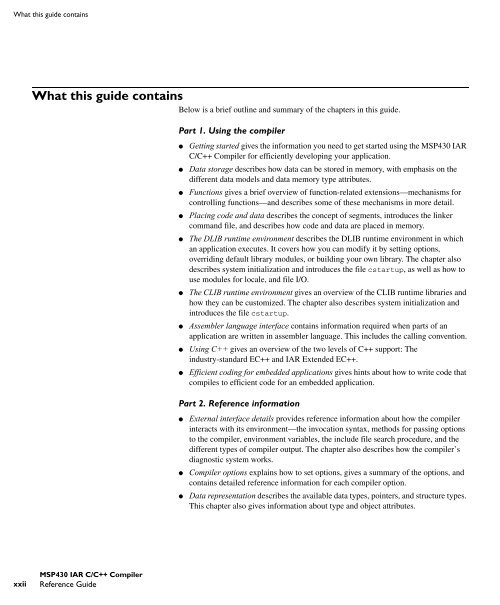
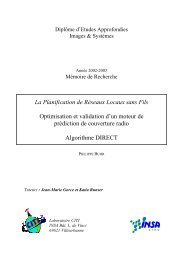
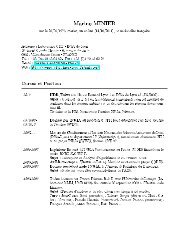

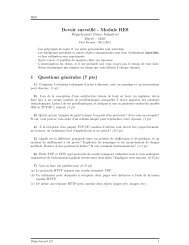

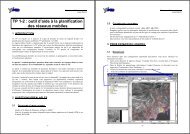
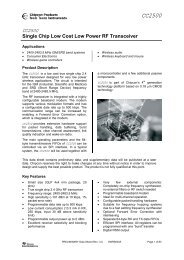
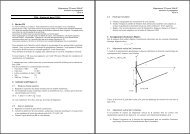
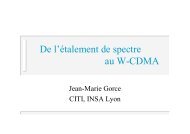
![td-res-4 [Compatibility Mode]](https://img.yumpu.com/45826987/1/184x260/td-res-4-compatibility-mode.jpg?quality=85)
